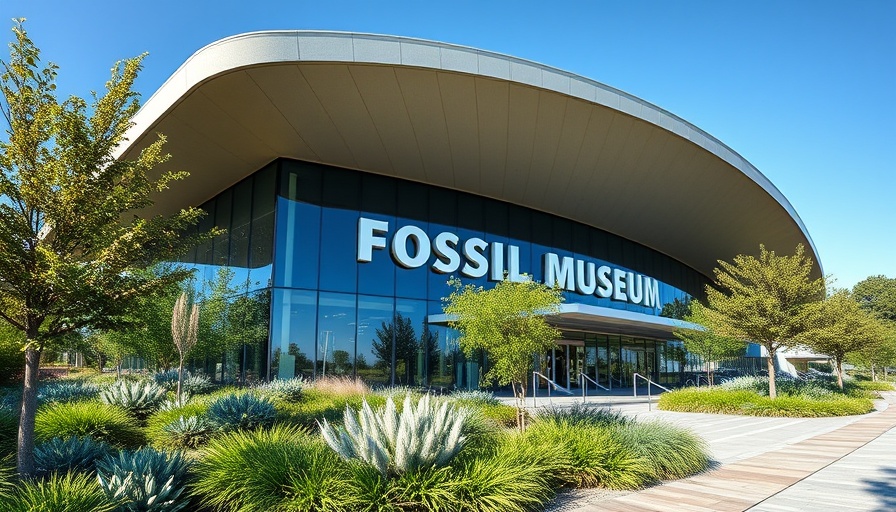
A Walk Through Time: The Unique Concept of the Edelman Fossil Park Museum
In the heart of Glassboro, New Jersey, the Jean and Ric Edelman Fossil Park Museum isn't just a place for ancient relics; it represents a significant step forward in environmental responsibility. Unlike conventional museums that often rely on fossil fuels for their operation, this remarkable facility has been designed to function entirely without them. From its inception, the museum has focused on educating visitors about environmental sustainability, leveraging modern engineering and design to create a space that both honors the past and champions the future.
How Innovative Designs Reduce Carbon Footprint
The commitment to sustainable construction is evident from the choice of mass timber for the building's design. Mass timber not only adds aesthetic value but also minimizes the overall carbon emissions associated with traditional building materials. Associate Principal Rachel Modica from Buro Happold emphasizes that passive energy strategies were considered early in the design phase, allowing for optimal site placement to enhance energy efficiency from the ground up.
The design team's collaboration with Ennead Architects ensured that the aesthetic appeal of the building complemented its environmental goals. The careful selection of materials was not merely for design; it is a calculated effort to reinforce the museum’s commitment to teaching visitors about the importance of climate consciousness.
The Role of Technology in Sustainable Operations
In line with its zero-fossil-fuel strategy, the museum has embraced cutting-edge technology, including solar energy and geothermal systems. Efforts to integrate air-source heat pumps represent a major step toward making the museum not just fossil fuel-free, but energy-efficient. By utilizing photovoltaic technologies, the museum's goal is to achieve net-zero operational energy—a remarkable feat that sets a benchmark for future construction projects.
What This Means for Future Museums
This museum serves as a blueprint for how cultural institutions can innovate in their approach to sustainability. The key takeaway here is that museums don't have to sacrifice their educational goals to operate sustainably. Instead, they can use their platforms to educate the public about historical, environmental, and technological advancements. By combining art with science, and creativity with responsibility, the Edelman Fossil Park Museum paves the way for future museums that prioritize preservation and sustainability.
Engagement Beyond Display: A Look at the Educational Mission
The museum is not only an exhibit of ancient fossils but a vibrant educational hub. Its mission extends into community engagement, sparking discussions about climate change and preservation across all age groups. The innovative design encourages visitors to actively participate in understanding the timeless connection between life and the environment, emphasizing that our past informs our future.
As the world grapples with pressing environmental issues, the Edelman Fossil Park Museum stands as a reminder that science and sustainability can coexist beautifully. It invites everyone to consider their role in protecting the planet while also inspiring the next generation of environmental stewards.
In conclusion, the museum epitomizes the balance between learning from our history and looking forward to a sustainable future. As other museums look to the Edelman Fossil Park as an example, we may see a movement toward eco-friendly institutions that harness technology to educate visitors and protect our heritage.
 Add Row
Add Row  Add
Add 






Write A Comment